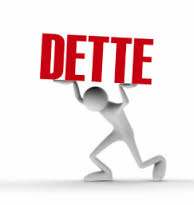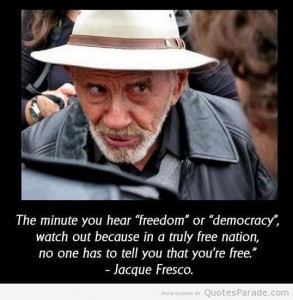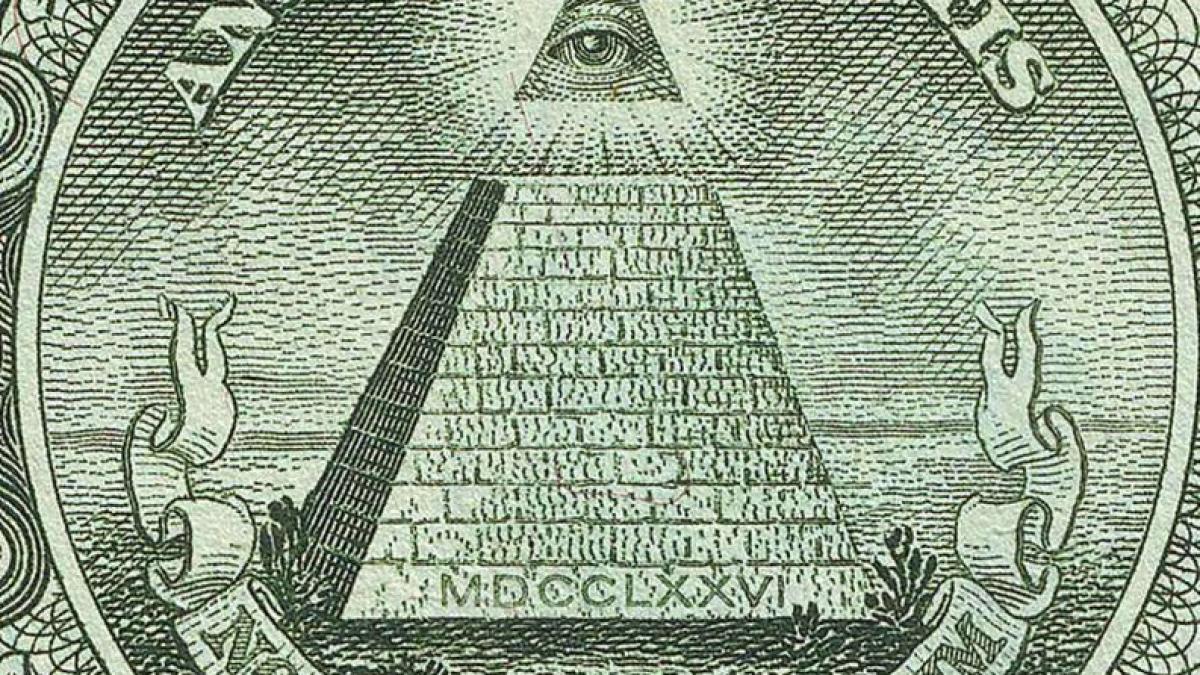Foray into an area reserved too: money - Part 1
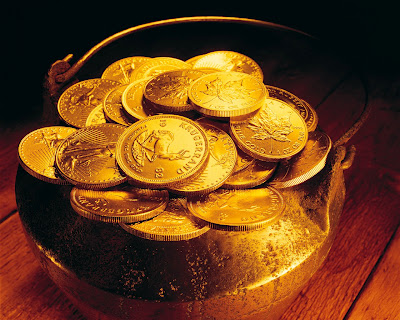
I come back on a very good study by ATTAC independent group that not only returns to the basic historical that led us to the current economic situation of the entire planet, but was widely anticipated and explained the risks that have occurred since the book which dates from 2004 ... the group continues its observations and interventions, and I am personally quite agree with their conclusions, and history:
Foray into an area reserved too: money
Foreword
The main themes of ATTAC, whether the tax on transactions between currencies, tax havens and financial crime, the abolition of Third World debt and the role of international financial institutions (IMF, WTO, World Bank) , retirement and pension funds, privatization of the public and the patenting of life services, all revolve around money. Yet this central theme is not directly addressed.
Why the citizen who refuses to undergo the dictatorship of the markets it not call into question the tool of the dictatorship? Leave this area and experts, that is, to a reserved area beyond any citizen control.
Although the complexity of monetary issues is daunting and discouraging, we wanted to address them in an attempt to bridge the gap between those who know and can take advantage of those who do not know, and suffer the consequences.
*
We left with a very familiar idea of money: it is what allows to trade with those around us, so this is a social link. And we were ready to believe that the currency is only the intermediary between people, ie it is politically neutral.
We knew that his form had changed the course of history, but we were convinced that this development had followed naturally that technical, so she had no other effect on the relationships between people that facilitate their exchanges ... Some of us were even convinced without really having asked the question, that the currency of a country was naturally created by his government's decision !!!
We understand first that "money", we always talk about, is no longer valid. We discovered, but with astonishment, that the creation of legal tender notes, essentially private interest. Then we learned, among other things, it is not guaranteed by any real wealth, which has opened the market, lucrative, risk. And that parallel currencies, such as LETS, were no more than illegal tickets and restaurant vouchers and other loyalty cards that retail chains offer their customers for advertising.
*
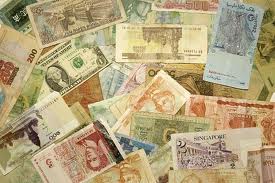
Brought to reconsider conventional views, we asked a lot of questions. The discussion leads us to some conclusions and proposals:
First, that in a democracy, it is the political debate that should return the key decisions on the currency of the country, namely: its creation, its total mass and the roles assigned to it.
Then, as a country's money supply should represent the wealth it produces for the offer for sale.
And finally, we cease to confuse being and having mixing in a single accounting, materials with human resources. These, by their nature, are not measurable.
*
Which brings us to defend a transformation of money, that we sketch to finish. With this new transformation, the economy would be the management of physical assets.
And income received by an individual would not be the price at which he manages to sell itself, it would be based on his personal and intended to give him the means to develop according to their tastes, aspirations and skills needs.
But to achieve this, we must first a majority of people are aware of these issues the currency.
Thank you to Jean-Pierre, Gerty, Gilbert, Guy, John and Annie for spent together since June 2000 in an attempt to clear brush this area long evenings.
summary
Unlike any standard textbook economics that addresses the chapter on money by claiming that it has three functions (unit of account or standard of value, medium of exchange and a store of value), we preferred to understand the meaning and especially the scope of these claims, first to know, in the first part, with the three possible forms of money: commodity money, banknotes and bank money.
In the first chapter, so we look for each of these three forms, what is its nature, what is its mode of creation and what guarantee it presents; and in the second chapter, we recall how has changed the course of history the use of these three forms of money to the most recent transformations of liberalization and deregulation.
The third chapter asks us to consider the basis on which all economic exchange and is based on the concept of value, before presenting the three classic functions attributed to the currency for comparison with current reality.
In the fourth chapter are briefly recalled big monetary theories, those schools of classical and neoclassical thought, Keynes and Marx.
This package allows to consider the relationship between money and society are addressed in Part II.
In the fifth chapter are discussed the consequences, both nationally and internationally, since money is a debt that involves a national community:
- Operational risk associated with this form of currency, effect-ball snow-interest loan and Third World debt. The bank interest related to money creation is legitimate? Who wins and who loses in the fight against monetary inflation, which was given as the sole objective of the Central Bank European?
The sixth chapter examines the parallel currencies, whether the form, most widely spread, vouchers or cards issued by large retail chains to retain their customers, or the local currency intended to offset disadvantages of the official currency for the population.
Finally, the third section attempts to answer the question: what other transformation of the currency could eliminate the adverse effects on society transformations that led to the current currency? What could be the modalities and what openings it would offer?
part one
"The alchemists of the Middle Ages tried to make gold with some base metal, modern alchemists, we aptise bankers have discovered a way to make money avecun little ink." Jacques Duboin (eyes open).

I
Grain or sorrel, like a promise
There is no definition of money on which economists have agreed. While economic textbooks usually start by saying that money has three functions as if it were a definition. We prefer to begin by recalling the origin and method of creation of the three forms of money which the first, commodity money was casting for millennia, and the third bank money is, by far, the largest since less than a century.
The three forms of currency in circulation.
The parts, which are the first form of our currency, are the memory of commodity money primitive. The latter, appeared some 5,000 years BC, was a commodity, such as grain or cattle (1), to be used or exchanged later against another commodity.
The choice of this intermediate goods evolved then to the metal (copper, silver and gold) preferred over others for its qualities: unalterable, stainless and handy. The first metal parts would be the electrum staters (natural alloy of gold and silver) appeared in Lydia around 680 BC: a stranger had had the idea to melt the ingots into small plates of the same weight and the same way to avoid having to weigh every transfer since now enough to count.
But in the species is said "ringing and cents" divisional of our present currency, there is more noble metal.
(1) herd hoi said in Latin from which comes the word pecuniary.
*
Although we can trace its origin to the Sumerian civilization, the greenback, the second form of our currency, has unsafe roads in the Middle Ages, leading to fears of being robbed merchants and ruined if they carried their gold coins. In the seventeenth century English travelers became accustomed to entrust to the goldsmiths of the City of London, against a receipt assuring can get them when they pleased, upon payment of a custody justified. Then these receipts, the goldsmith notes or bank-notes were used as a method of payment and the public became accustomed to accept as money because they were easier to manipulate than the parts and that the one who had received guaranteed to be able at any time re-exchanged against gold deposited.
The goldsmiths were quick to realize that we never called them all the money they had on deposit, but only a very small part. They concluded that they could without much danger, to risk much sign receipts they had gold in their vaults and they used such receipts "short" for their own shop ... Former bankers from Italy and Amsterdam, which were issuing, too, the deposit receipts when they are deposited cash, proceeded as goldsmiths of the City of London. Hence the spontaneous generation of banknotes, received multiple copies of a single deposit. The value of the transaction is significant for the person who utters: indeed, when the currency ceases to be good, is just a piece of paper, make change provides against the value of the banknotes flowing in the market. This was all included counterfeiters long time!
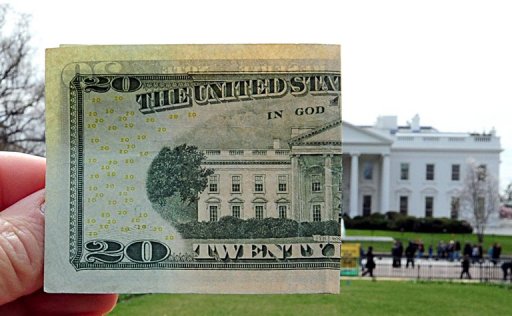
But if anyone could open a bank, the risk was great, especially in times of trouble, the audience would claim the gold in exchange for all the notes and noticing too many and their alleged convertibility was a decoy ... to eliminate this risk, a group of bankers undertook to obtain the exclusive right to engage in this. But to exclude others, it was the intervention of the state. Seizing the opportunity of a need for money of their sovereign, a group of English bankers in exchange for an advance, obtained from William III that gives them the sovereign right to print money (the other being the sovereign rights right to raise an army, to administer justice, to make war or sign a peace treaty). It was an amazing privilege as it is the creation of the national currency! But so was born the Bank of England in 1694 (2). And a similar scenario, which had already been practiced in Sweden occurred in most other countries around the same time. The Bank of France, for example, was born thanks to two coups:
In 1799, the Revolution is nearing its end, two Parisian bankers, one answering the remarkable name of John Bartholomew The Coulteux Canteleu and the other to that of Jean-Baptiste Perregaux, sent to Bonaparte, then in Egypt a messenger for the offer him money, according to historian Dauphin-Meunier (3) plotting a coup. A few days later the Directory was overthrown "to save the Republic" and two weeks later, the two bankers put 12 million francs available to the new government. Bonaparte will thank: not only did he appoint senators, but shortly after his coup of 18 Brumaire, February 13, 1800, he accepted the articles they gave him a new bank, although qu'appelée Private Bank France with a capital of 30 million, of which they became directors with Bonaparte and his brothers and two other "conspirators" Cambacérès and Lebrun. The purpose of the bank was to discount commercial paper, but it had competitors, the main one being the Caisse discount and trade, that Bonaparte first tried to discredit. Unsuccessful, he even sent troops to seize the accounts and hunt staff. And as the bank still refused to surrender, the Consul Bonaparte, by the law of 14 April 1803 (4) gave the bank an organic constitution and he conceded the monopoly of issuing notes for fifteen years in Paris and major cities where it would branch. Then, as, in his view, its bankers were trying to take too much independence, Napoleon rewrote the constitution gave him "basic statutes," which remained in force until "in 1936, in which it was headed by a government kind of constitutional monarchy: shareholders always elected the regents and the censors, but management was under the tutelage of a governor and two deputy governors appointed by the emperor also his privilege was extended for 25 years and its capital. increased to 90 million. This privilege it was then renewed, and after the revolution of 1848, became the exclusive nationwide.
It is then for providing Napoleon III 12 million he needed to ratify his coup of December 2, 1851 that the bank still called "France", gained independence.
*
The third form, bank money, was born with the first banks: the time of the Greeks and Romans, transfers between current accounts of merchants were already made by bankers.
In the fourteenth century invented the bill of exchange, or processes for remote payments: the banker remuneration, stands between the merchants to centralize bills, evaluate and perform clearing and exchange between different currencies.
In the eighteenth century became the discount: banking, buying a bill to his client because of credit.
It was not until the twentieth century that bank money is released to the general public, who do not often aware however, that John Kenneth Galbraith commented: "The process by which banks create the money is so simple that the mind is still confused. "(5)
This currency is indeed a set of writing in the accounts of institutions that create it, and it is transferred from one account to another by means of an order, which can be written (a check) or computer (a credit card). Specifically the process of creating bank money is the simultaneous increase in assets and liabilities held by a financial institution account.
(2) two years after its foundation, it has issued 1,750,000 pounds in tickets when she was in reserve than 36,000 pounds of gold.
(3) Read "The bankers Bonaparte" by JM Vaslin in The World Economy November 5, 2002.
(4) Law of 24 Germinal Year XI.
(5) John Kenneth Galbraith "Money, whence it cam, Where It Went," in French "Money" translation.
It's so easy you might think that the issue of this form of currency is restricted to government, which would use it to adapt national money supply needs of the entire population ... Well, and also amazing as it seems, not only this facility is not reserved them, but it's not even a matter for governments!
It is the privilege of some banks and other credit organizations defined as follows:
" Every credit institution that received monetary authorities a" license "to be made available to customers or managing means of payment and conducting financial transactions with non-financial agents (ie the businesses, individuals or administrations) can create bank money. "
In France, the privilege of "managed transferable deposits" was in 1999 to 70.9% reserved for commercial banks to 9.4% in the Giro, 6.2% for savings banks (since 1978), 11.6% to the Treasury and 1.9% other (including the Bank of France). But on December 31, 2001, this privilege has been removed to the exchequer!
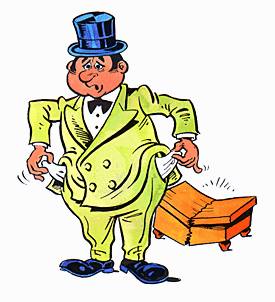
Our currency in its entry form is created by financial institutions that are predominantly private interest groups.
Dual enrollment, or "provision" of a bank account can occur:
by depositing cash (notes and coins) or by transfer from another account, or finally through a loan from the bank.
In the latter case, the credit results in a dual enrollment, just as if there had been real deposit, sometimes writes as follows: ". Loans make deposits"
This third method of funding generated by a virtual repository such as a draft, it is a promise, so generates ex nihilo bank money: it is subject to the same payment instruments (check books or credit cards (6)) that in both processes related to a non-fiction submission, so it causes the increase in the money supply in circulation when the flow of these new loans are higher than the flow of repayments of earlier loans.
The so appropriated by a commercial bank account several times the amounts that have been filed ... and thanks to the miracle of a process that we call back after thinking about the security relating to each of the three forms of currency.
Warranty? - Fewer insured
When they were gold or silver coins had intrinsic value, than the metal they contained. This value was guaranteed: manufactured under the control of a sovereign, his image therein, which showed that he was the guarantor of its weight and its "good quality". The problem with this form of currency has long been the variety of parts, that after dismemberment of the empire of Charlemagne, every lord wanted its currency valid in its stronghold. For centuries, kings failed to regain the right to establish the unit of currency in the kingdom, despite the name of Frank John II, called the Good, in 1360 gave this money which was used to pay the ransom that freed of the English, who had taken prisoner. It was not until the Convention (April 1795) for the monetary unit to be established, along with the weights and measures.
But today's metal parts, without precious metal, no longer have any intrinsic value and bank notes are not convertible against gold they are supposed to certify the filing.
And yet, and as incredible as it may seem when you discover that fact, these are the only two forms of currency that is legal tender! They are also designated by fiat money, from the Latin fiducia, trust. Why? Because only in the form of currency notes and coins has "unlimited legal tender", which means that its validity as a means of payment is guaranteed, and it is because it is created under control Central bank: it circulates metal parts that are made on the order of the Administration of Money and Medals, and it kept the monopoly acquired as was recalled, manufacturing tickets. This control appears as a kind of survival of the sovereign right to coin money and this is what remains of a sovereign right which gives the Central Bank the name of issuing institution.
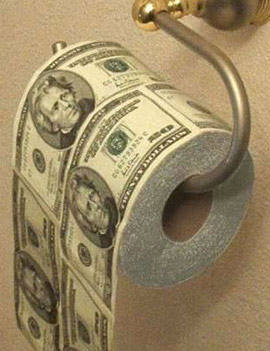
This is probably the term that has become widely used the idea (or feeling) that all money is created by order of a state institution. But this is an illusion. Actually legal tender or "fiduciary" is only pocket money! It does not constitute an insignificant portion, less than 15% of the money in circulation. Because the amount of coins is so low that they are used only for small purchases. And for slightly higher amounts of payments and honest, even for everyday purchases, it checks and credit cards for tickets ... therefore mainly used for laundering dirty money because their preferred anonymity increasingly allows them to carry discreetly. Without this perverse use, the total amount of notes would be much less.
(6) which are often called "credit card" as they are cards for payment from an account.
*
Most of the money is bank money (note: the accounting and computer lines). But it has, by nature, no intrinsic value and, in addition, unlike paper money, it has generally no legal guarantee. Confidence that each attaches him is only that the customer against the commercial bank that holds the account. As this money is only a game of writing in registers or memory of the computer of the bank, it goes into effect if the bank fails. When a bank customer, you deposit cash or a check to replace the window, the corresponding amount is recorded as an asset of the bank: she is now the owner. The same amount is also included in its liability as it is understood that you must. It is now in your debt, you are his creditor. And if it is a day declared bankrupt, that is to say, if it's put into unable to pay what it owes, you're just one of his many creditors, some of which are often declared "priority" ...
The risk of the currency entry form comes from its mode of creation. Only that it is possible to register how much does anyone on an account, there is no natural limit to the money supply in this form. We will see later that this facility has obviously led to abuse, rules and controls were successively introduced, changed, deleted, etc. Previously, trying to understand the mechanisms by which commercial banks, as opposed to a false but often ingrained in the minds idea, are far from being content to live to lend to some of their customers what others have submitted them. They have indeed acquired the power, especially large deposits in their care are higher, to create money from nothing, "ex nihilo." And not only do they have the power to give what is not theirs, but in addition, they have one to lend it several times, because they take advantage of what is euphemistically called "the multiplier effect of credit."
Let's get a little into detail to explain this mechanism, as it seems critical to the entire economy (Part 2). Previously, three quotes show that we are not alone in this opinion.
First that of Thomas Jefferson, third President of the United States: "I believe that banking institutions are more dangerous to our liberties than standing army. Whoever controls the money of the nation controls the nation. "Then the thought of the famous American industrialist Henry Ford:" If the people of this nation understood our banking and monetary system, I believe there would be a revolution before tomorrow morning. "Finally Maurice Allais, "Nobel" in economics, described the process as follows: "In essence, the creation of present money ex nihilo by the banking system is the same [...] to the creation of money by counterfeiters [...]. Specifically it leads to the same results. The only difference is that those who benefit are different "(7)!
(7) "The global crisis today," ed. Cl JOUGLAR.
Sources: http://www.france.attac.org/
To pause after this first important part but already complicated for less accustomed to the economy (mixed with history), here's a video of Mini-Show that attempts to explain the process of money creation in 2010 .. . Will we get out of the downward spiral ...?:
Little Reminder: in autumn 2008, three scenarios were given for "out of the crisis" ...:
Scenario A: The central bank refinances commercial banks massively ...
We have seen, the current problem is a liquidity problem (missing commercial banks money "central bank"). Some may say, easy! Since it is not gold, central banks can simply start printing money, refinance commercial banks and everything will be fine (if the customers of these banks are looking for tickets mass, they can provide, do not panic).
Moreover, from a political perspective, it is interesting to note that such a decision could only be taken by an unelected person (Mr. Trichet, governor of the ECB in Europe and Ben Bernanke, chairman of the Fed in the USA (note: at the time!)). Note that they made gestures, including lowering interest rates! This is all well and good, but would have the disadvantage of losing confidence in the currency itself! (whereas today it is in the banks that trust is lost). Indeed, how could anyone believe that money is "store of value" (one of the properties required of money) if we issue all you want, unrelated to the economic wealth of the country? In fact, this scenario A is highly inflationary, and if practiced on a large scale, there would be risks that we were in the same situation as Zimbabwe (inflation of 100,000% per year). The currency would then no longer say anything, and would probably be replaced by other forms of exchange!
Scenario B: States buying up banks ...
If banks are not refinanced by the central bank, one solution could be that used previously: states themselves buying up banks (nationalizing) and ensure their credit ratings Thus, banks may give away tickets to depositors who pick up their deposits because their new owner (the state) gave them cash. From a political standpoint, it's a problem "ethics": it is the taxpayers who will pay off the bankruptcy of the banks! But mostly this scenario B is not credible because the states are already hyper themselves in debt. For example, the French debt reached 1.25 trillion euros in the first quarter of 2008, or 63% of GDP! In the United States, the situation is no better: the federal debt reached 10,000 billion!
In other words, you ask a blind cataract reached driving blind! The risk that states themselves may one day not repay their debts and be themselves insolvent with all the consequences that implies: civil servants, pensioners, unpaid, treasury bills dishonored etc!
Scenario C: Nothing is done: Situation credit crunch

Another scenario could be that when governments do nothing. We find ourselves in this case in the same situation as that of 1929, known as the credit crunch and described by Irving Fisher: leaving do, bank failures are increasing, and the number of depositors cheated! The consequence is that a good portion of them are insolvent, no money, and there is a domino effect. In fact, in this situation everyone is looking for liquidity and it is willing to sell his property: there is thus on all markets numerous sellers and very few buyers: prices in all areas collapse (it is otherwise than in scenario A), nobody wants to buy, companies are unable to sell their produce ... - October 10, 2008 by €ric
April 2012: it will be noticed immediately that no real solution has been found for the scenarios of 2008, if not always a rather bewildering choice and contrary to the interests of citizens, ie Scenario B without even really guarantee the possibility of a refund any future: protecting the privacy and to saddle the past, present and future citizens with all possible assistance devices States intiaux diverted from their goals, and not renationalising the most obvious debts ... but largely avoiding any control or take a share of the writing system ...
Yves Herbo 29-09-2014 - ditto to date: all is confirmed ... to be continued ...

